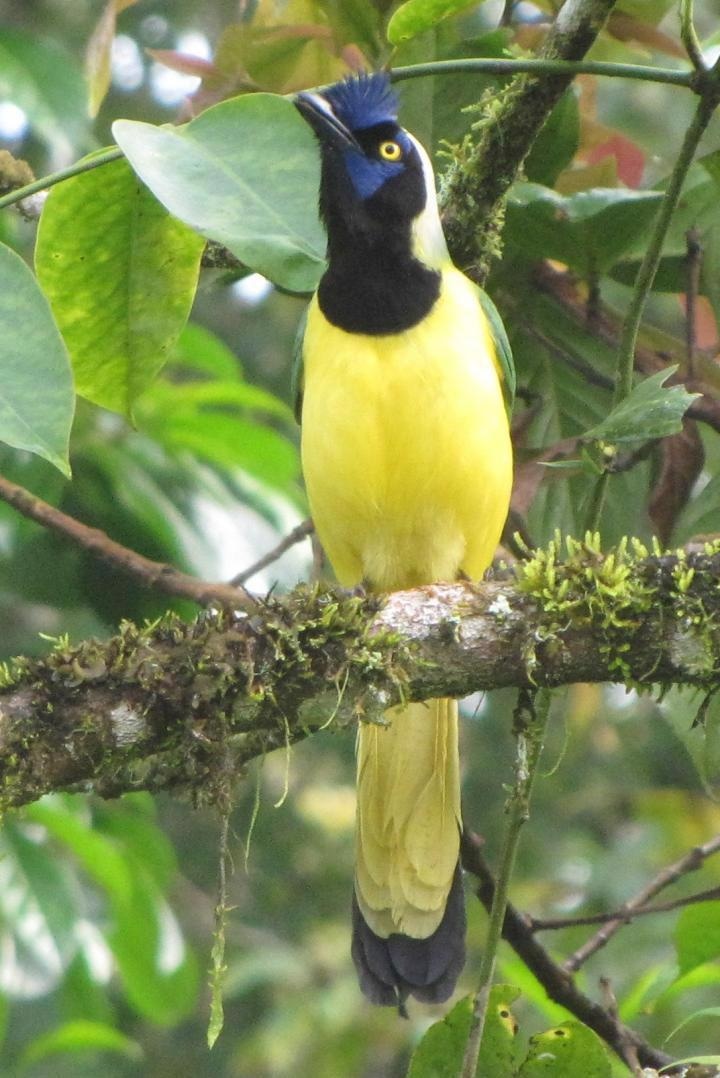Apr 26 2021
Regardless of an expected shift in main species distributions, a continental-scale network of conservation sites will probably stay effective even under future climate change scenarios.
 An Inca Jay at Otun Quimbaya, Colombia. Image Credit: Professor Stephen Willis.
An Inca Jay at Otun Quimbaya, Colombia. Image Credit: Professor Stephen Willis.
Under the guidance of Durham University, a new study published in the Frontiers in Ecology and Evolution journal analyzes the effects of possible climate change scenarios on the network of Important Bird and Biodiversity Areas (IBAs) throughout the Caribbean, as well as South and Central America.
The study was performed in collaboration with Senckenberg Biodiversity and Climate Research Centre, BirdLife International, and the National Audubon Society.
IBAs are sites determined as globally significant for the conservation of bird populations, with more than 13,000 sites found in 200 countries over the past four decades. Several of them are covered by formal protected zones, whereas the others are conserved by indigenous lands or community-managed reserves.
The two main reactions of species to recent climate change events are variations in range and abundance, resulting in the worldwide reshuffling of populations.
Variations in range might result in the vanishing of species from regions they occupy, while offering them chances to colonize new sites.
Such a redistribution could impact the potential of international site networks (such as protected areas) to preserve species. Thus, determining which sites will continuously offer appropriate conditions and which will probably become unsuitable is essential for effective conservation planning with the continuous warming of Earth.
Evaluating the effect of climate change on the distributions of species, and the impacts for networks of sites determined to preserve them, could help inform conservation plans to guarantee that such networks continue to be effective.
The study modeled the impacts of various scenarios of climate change on the broader network.
It found that, for 73% of the 939 species of conservation concern for which IBAs have been determined, over half of the IBAs in which they exist now were predicted to stay climatically appropriate and, for 90% of species, at least one-quarter of sites remain ideal.
The study findings indicate that the network will stay strong even under climate change. However, a concerning aspect is that 7% of the species of conservation concern are predicted to have no ideal climate in the IBAs currently identified for them.”
The Caribbean and Central and South American region supports about 40% of all the bird species of the world, so this network is vital for a large proportion of the world’s birds. To develop realistic predictions of future changes, we not only considered where suitable climate will occur for species in future but also the likelihood of species dispersing to newly suitable sites.
Stephen Willis, Professor and Director of Research, Department of Biosciences, Durham University
“This information is helping to identify potential management strategies across the IBA network,” added Willis.
These results highlight how critical it is to effectively conserve the network of Important Bird and Biodiversity Areas across the Americas in order to help safeguard birds in the region under climate change. Despite projections of significant shifts in the distributions of individual species, the network as a whole will continue to play a key role in future conservation efforts.
Stuart Butchart, Study Co-Author and Chief Scientist, BirdLife International
According to Aurelio Ramos, Senior VP, Audubon International Alliances Program, “Applying this science to secure and strengthen IBAs in the Americas is essential to support the future of birds and people. Audubon, BirdLife International, American Bird Conservancy and REDLAC have partnered in the Americas on a project to strengthen protection of Climate secure IBAs identified in the research called Conserva Aves.”
The results of this study highlight the importance of a network-wide perspective when making conservation management decisions for individual sites when planning for climate change.
Alke Voskamp, Senckenberg Biodiversity and Climate Research Center, Durham University
The team points out that designating protected regions to preserve biodiversity is the basis of species conservation, and the significance of taking into account the local environmental management decisions and their effects on broader, global conservation networks has never been so crucial.
Journal Reference:
Voskamp, A., et al. (2021) Site based conservation of terrestrial bird species in the Caribbean and Central and South America under climate change. Frontiers in Ecology and Evolution. doi.org/10.3389/fevo.2021.625432.